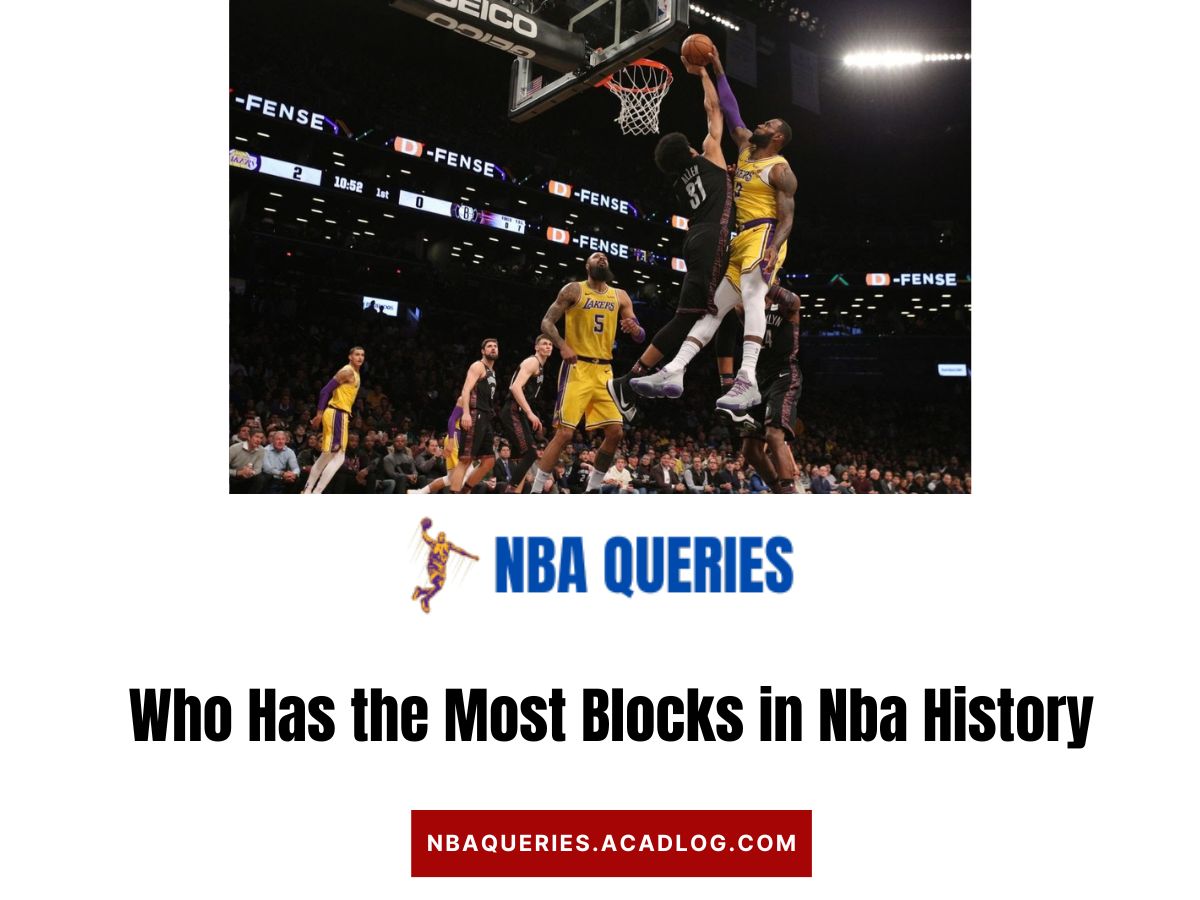The National Basketball Association (NBA) has been graced by numerous defensive stalwarts throughout its illustrious history. These towering figures not only changed the trajectory of countless shots but also the very outcome of games, leaving an indelible mark on the league’s defensive strategies. The record for the most blocks in NBA history is a testament to a player’s enduring dominance, skill, and intimidation on the defensive end. This article embarks on a journey to explore the elite circle of shot-blockers who have etched their names into NBA lore.
The Pinnacle of Shot Blocking
At the zenith of this exclusive list is Hakeem Olajuwon, a player whose defensive prowess is unmatched in the annals of NBA history. Known as “The Dream,” Olajuwon has amassed a staggering 3,830 blocks over his illustrious career. This monumental achievement is not just a number but a reflection of his ability to alter the course of the game with his defensive acumen.
The Elite Shot-Blockers Club
Following closely behind Olajuwon, the list of legendary shot-blockers is both impressive and diverse. These players have redefined defensive play, each bringing their unique style and intensity to the hardwood.
- Dikembe Mutombo: With 3,289 blocks, Mutombo’s signature finger wag became a symbol of his shot-blocking dominance.
- Kareem Abdul-Jabbar: The NBA’s all-time leading scorer is also third on the blocks list, showcasing his versatility with 3,189 blocks.
- Mark Eaton: Standing at 7’4″, Eaton was a formidable presence in the paint, accumulating 3,064 blocks in his career.
The Impact Beyond the Numbers
While the sheer volume of blocks is a quantifiable measure of a player’s defensive impact, the true significance of these achievements lies in their ability to influence the outcome of games. Blocks can demoralize opponents, energize teammates, and shift the momentum of a contest. Players like Olajuwon and Mutombo were not just defenders; they were game-changers whose presence alone could alter an opponent’s offensive strategy.
The Evolution of Shot Blocking
The art of shot-blocking has evolved over the years, with the NBA witnessing a transformation in the role of the traditional big man. Today’s players are required to be more versatile, defending not just the rim but also the perimeter. This evolution reflects the changing dynamics of the league, where speed and space have become paramount. Despite these changes, the fundamental importance of blocking shots remains a constant, a crucial element in a team’s defensive arsenal.
The Anatomy of a Shot-Blocker
Physical attributes play a significant role in a player’s shot-blocking capabilities. Height and wingspan are the most apparent advantages, allowing defenders to cover more area and challenge shots that would be out of reach for others. However, physicality alone does not make a great shot-blocker. Agility, timing, and the ability to read the game are equally crucial. The ability to anticipate an opponent’s move and react swiftly is what separates the good from the great.
Key Physical and Mental Attributes
- Height and Wingspan: Essential for reaching and altering shots.
- Agility and Quickness: Allows defenders to cover ground and adjust their position swiftly.
- Timing: Knowing when to jump and extend for the block without committing fouls.
- Basketball IQ: Understanding opponents’ tendencies and the game’s flow to predict where and when a block attempt is most likely to succeed.
- Mental Toughness: Staying focused and relentless, even when previous attempts to block shots have failed.
Training and Technique
Behind every block is a regimen of rigorous training and a deep understanding of defensive techniques. Shot-blockers spend countless hours refining their craft, from weight training to improve their explosiveness to studying film to better understand opponents’ tendencies. Drills that enhance vertical leap and reaction times are part of their regular training schedules, as are exercises designed to improve lateral movement and flexibility. Such comprehensive training programs ensure that shot-blockers are prepared to face the diverse challenges posed by the NBA’s best offensive talents.
The Art of Timing and Positioning
Mastering the art of shot-blocking extends beyond physical training to include mental preparation and technique refinement. Successful shot-blockers possess an acute sense of timing, knowing exactly when to leap to either swat the ball away or alter the shooter’s trajectory subtly. Positioning is equally vital; being in the right place at the right time requires not only physical agility but also a deep understanding of defensive schemes and the ability to predict the offense’s next move.
The Strategic Impact of Shot-Blocking
Shot-blocking extends its influence beyond the mere act of stopping a single shot; it has profound strategic implications on the game. A dominant shot-blocker can deter opponents from driving to the basket, forcing them to settle for less efficient perimeter shots. This defensive prowess can shift the dynamics of a game, allowing the shot-blocker’s team to implement more aggressive defensive strategies elsewhere on the court.
Changing the Offensive Landscape
The psychological impact of a shot-blocking presence cannot be overstated. Offensive players often alter their approach, hesitant to enter the paint or attempt shots near the rim, knowing that a formidable shot-blocker lies in wait. This hesitation can disrupt offensive flow and reduce the effectiveness of an opponent’s scoring strategy, illustrating the wide-reaching impact of elite shot-blocking.
The Legacy of Shot-Blockers in the NBA
The legends who hold the records for the most blocks in NBA history have left an indelible mark on the league. Their contributions extend beyond the highlight reels of spectacular blocks; they have redefined what it means to be a defender in the NBA. As the league continues to evolve, the lessons learned from these defensive titans remain relevant, inspiring a new generation of players to embrace the art of shot-blocking.

